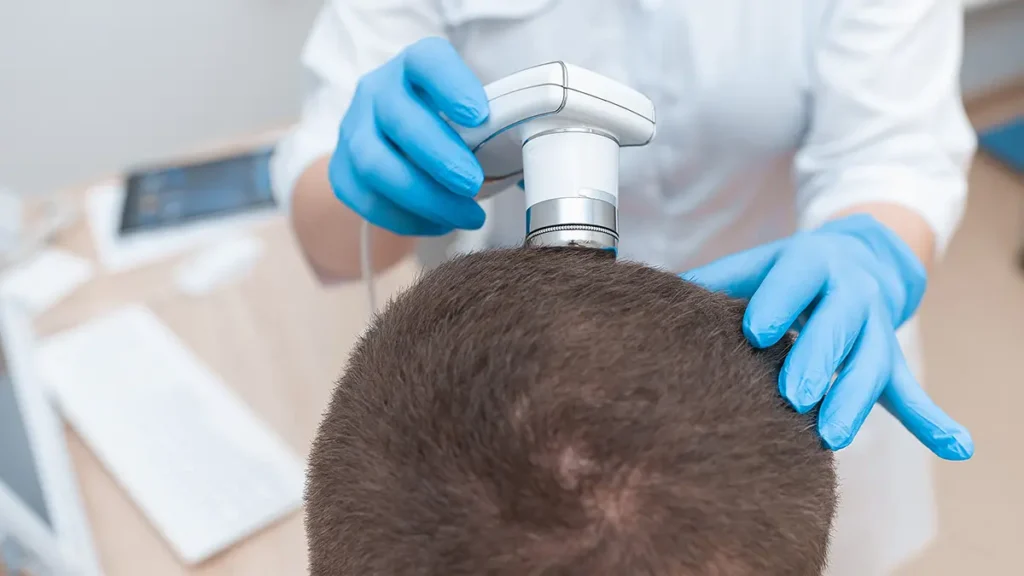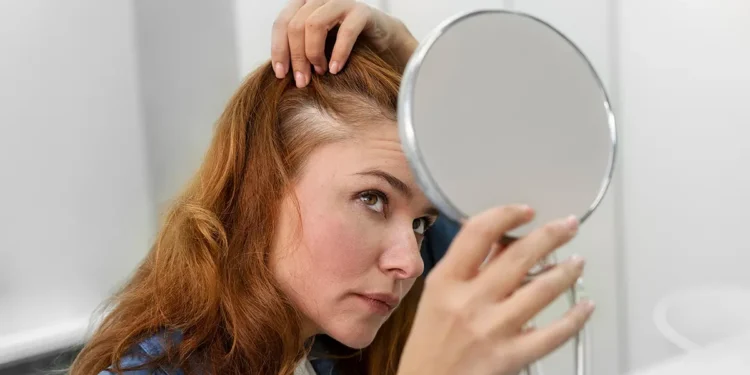5 Hair Loss Treatments that are ground-breaking for bringing hair back to a head near you.
It’s a common misperception that baldness and a receding hairline (in women as well as men) signifies the death of hair, as we know it. Hair today, gone tomorrow, you might say.
In reality, what’s happening when someone begins to lose their hair is that each follicle shrinks over time, resulting in shorter and finer strands. Eventually, the follicle does not grow new hair.
Yet follicles remain alive, which lends considerable weight to the argument that it’s still possible to grow new hair.
Subsequently, this segment of the industry – namely, the reintroduction of hair – is big business, and there now exist a number of methods by which people are seeking to rediscover the fun of follicles.
Here are five ground-breaking types of treatments bringing hair back to a head near you:
The ‘Over The Counter’ Remedy
Minoxidil is widely regarded as a primary remedy for various hair loss conditions and is readily available without a prescription.
Initially developed to manage high blood pressure, it promotes blood circulation by fostering the growth of new blood vessels around the hair follicles.
However, the effectiveness of Minoxidil is contingent upon continued use; its benefits cease once the treatment is discontinued. Consequently, it is often prescribed in conjunction with other medications.
Tech, And The Use Of Low Level Laser Treatment (LLLT)
The surge in popularity of regenerative facial masks for skin is fuelled by the same type of red LED light that also can help with hair regrowth. LLLT encourages the creation of substances that dilate blood vessels, and studies have shown the effectiveness of this.

Hormone Correctors
Hormones are ultimately the drivers behind Pattern Hair Loss, the most common form of hair loss in men and women. This comes about because of an inherited sensitivity to a build-up of the hormone Dihydrotestosterone (DHT) in follicles.
While Minoxidil will take you a certain distance, male-only prescription drugs such as Finasteride and Dutasteride are said to go a step further, and work by reducing the conversion of testosterone to DHT.
Both come as a pill or topical solution, and the success rate is said to be between 70-90%. Some people do experience side-effects though, which can include a drop in libido.
For women, the most common hormonal treatment is the anti-androgen drug Spironolactone, a doctor-prescribed diuretic.
Natural Remedies
Nature has its own ingredients that reduce the conversion of testosterone to DHT, with pumpkin seed oil and rosemary oil noted as two of the most effective.
However, the full list is long, so take time to research and explore the likes of Bhringraj oil, onion, garlic, capsicum, hibiscus and others.
As expected, while harmful side effects of natural products are lower, so too is how strongly they work.
DIY Procedures
One of the easiest ways to provoke the healing response in hair is to use a derma stamp or a roller. These are tools covered in tiny, thin needles that puncture the top layer of skin. Doing this twice a week should cause just enough damage to bring on the skin’s own healing response, which includes growth factors. Rollers cost around £20 each and last for approximately three months.
Another similar treatment is known as the Vampire Facelift, so-named because it uses your own blood. It’s spun to extract the platelets which contain growth factors, which are then needled back into the scalp. It does, however, rely on the quality of your blood in the first place – so those with diabetes, or who have insulin resistance, are unlikely to see the same positive effects.
Another less intrusive procedure is gentle massaging of the scalp. This will not spur regrowth, but what it will do is help to protect and retain the hair you have, and even increase its thickness.
This can be done by hand, or if you’d rather, there are massaging tools that will do the work for you. We hope you enjoyed these 5 hair loss treatments.










